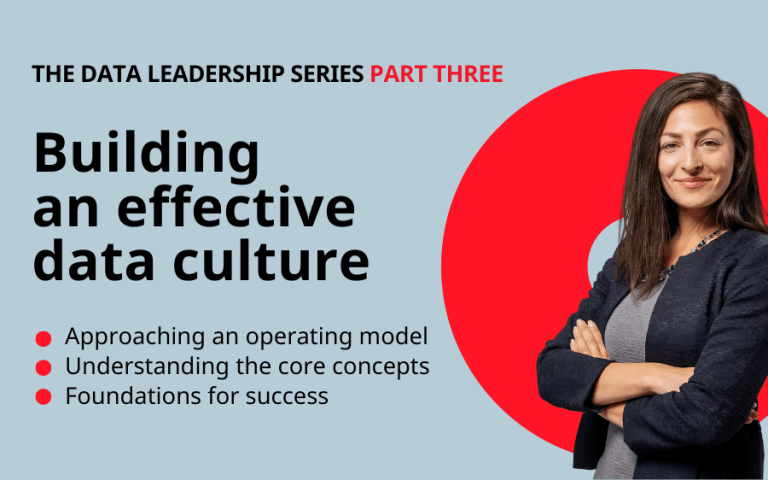Data culture can be thought of as the ‘repeated patterns of thinking and behaviour’ that employees exhibit when working with data.
Repeated patterns
The key aspect of this definition is not the word ‘data’ but the word ‘repeated’. Discerning a pattern requires observing it more than once. When we emphasise the observability of ‘repeated patterns of thinking and behaviour’, we can focus on what is effective. We can begin to start managing what we are measuring for the betterment of our cultural constituents.
Improving the culture of data within an organisation is a leadership objective so inextricably bound to the success of digital transformation that it is helpful for every Data Leader to seek to know what is informing the repeated patterns of thinking and behaviour around data. More importantly, in practice the key success factor is knowing and understanding how these patterns are enablers or disablers of high or low performance.
How would you react?
Let’s take a repeated and common complaint from technical stakeholders: business users lack data literacy and break things! This often leads to the perception that business stakeholders should not have access to the underlying data. With the conscious decision to “lock down” certain systems to prevent downstream reporting errors, Data Leaders prevent one type of issue but provoke the counter perception that data is slow and its agents uncooperative.
As a Data Leader, how would you react? Would you limit data access or open the flood gates?
There is a depth of insight that can come from asking whether data culture is the symptom or the cause of the failing reporting capability. Perhaps it is both. The reasons why business stakeholders think reporting is slow and technical stakeholders think their counterparts are data illiterate are now irrelevant; the data culture has failed because underlying capabilities and processes do not deliver the intended outcome. The virtuous circle you needed becomes a vicious cycle.
The above example highlights how outcomes and purposes can be disconnected, misaligned or poorly incentivised. It is only through a root-and-branch review of how the patterns of behaviour and thinking are leading to failed outcomes that a Data Leader can begin to transition to a better state. A broad, systemic view is required to know where a data culture is failing; to mitigate bias and objectively assess a data culture, it requires Data Leaders to be exposed to a range of views at different operating levels. If you get data culture right, the right outcomes are sure to follow.
Next steps
As a Data Leader, understanding your data culture is a key requirement and should be high on your list of priorities because it has such a broad and disproportionate effect on the outcomes you seek to create. If you are struggling to get an unbiased perspective, ask us about a Data Culture Assessment.
contentS
- Repeated patterns
- How would you react?
- Next steps
Webinar
We discussed this topic – and much more! – with our fantastic guest speakers in the 3rd online event of our Data Leadership Series. Catch up now!



